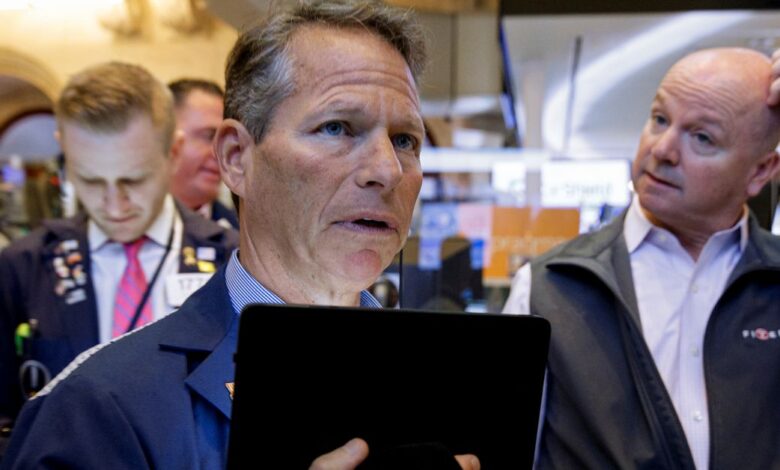Nasdaq, S&P 500 end lower, dragged down by communications services

Oct 22 (Reuters) – The S&P 500 and Nasdaq closed decrease on Friday as disappointing quarterly stories from Snap Inc and Intel Corp put stress on the communications and know-how sectors and traders turned skittish as Federal Reserve Chair Jerome Powell mentioned stimulus tapering.
The Dow managed to finish the day with a report closing excessive for the primary time since Aug. 16, however all three indexes had misplaced floor in morning buying and selling whereas Powell was talking however went on to pare losses in a uneven session.
Powell stated the U.S. central financial institution was “on monitor” to start lowering its purchases of property.
Sean Solar, portfolio supervisor at Thornburg Funding Administration in Santa Fe, New Mexico stated Powell “did not seem incrementally extra hawkish.”
However Solar stated traders had been “actually anxious” about weaker than anticipated earnings at Snap, which attributed some weak spot in its promoting enterprise to international supply-chain disruptions and labor shortages that induced manufacturers to drag again on their promoting spending.
Snap shares fell greater than 25% and its report induced shareholders to exit greater promoting dependent communications corporations similar to Fb Inc and Twitter Inc , which each closed down round 5%.
Consequently the S&P’s communications providers index was the most important drag on the benchmark index.
“Shoppers wish to open their wallets and purchase issues however they cannot if items are caught on container ships. And advertisers aren’t going to promote issues they cannot promote,” stated Solar, noting that progress shares had been down in sympathy.
“Buyers at the moment are interested by threat reward and valuations in progress shares depart much less room for disappointment.”
Intel shares tumbled virtually 12% after the pc chip maker missed third-quarter gross sales expectations, whereas its chief govt officer pointed to shortages of chips holding again gross sales of its flagship processors.
The Dow Jones Industrial Common rose 73.94 factors, or 0.21%, to 35,677.02, the S&P 500 misplaced 4.88 factors, or 0.11%, to 4,544.9 and the Nasdaq Composite dropped 125.50 factors, or 0.82%, to fifteen,090.20.
Nonetheless, all three indexes notched a 3rd straight week of features for the primary time since early July, with the S&P including 1.6% for the week whereas the Dow climbed 1.1% and the Nasdaq superior by 1.3%.
Among the many S&P’s main sectors on Friday, shopper discretionary was a drag as Amazon.com Inc fell and Intel helped push down the high-profile know-how index .
The monetary sector was helped, nonetheless, by sturdy features in American Specific Co , which rose 5.4% after it beat revenue estimates for the fourth straight quarter.
Analysts elevated their expectations for S&P 500 earnings progress for the third quarter, forecasting a rise of 34.8% year-on-year, up from an anticipated 31.9% rise initially of the week, in keeping with information from Refinitiv.
However some traders had been already trying past the spectacular earnings numbers, in keeping with Brad McMillan, chief funding officer for Commonwealth Monetary Community, an impartial broker-dealer in Waltham, Massachusetts.
“The true query round whether or not we are able to push greater goes to be whether or not financial system goes to get higher, as a result of the earnings are backwards-looking,” McMillan stated.
Information confirmed U.S. enterprise exercise accelerated in October, as COVID-19 infections subsided, although labor and uncooked materials shortages held again manufacturing.
Advancing points outnumbered declining ones on the NYSE by a 1.08-to-1 ratio; on Nasdaq, a 1.30-to-1 ratio favored decliners.
The S&P 500 posted 88 new 52-week highs and no new lows; the Nasdaq Composite recorded 142 new highs and 137 new lows.
On U.S. exchanges 11.03 billion shares modified fingers in contrast with the ten.38 billion shifting common for the final 20 seconds.
Reporting by Sinead Carew in New York and Shreyashi Sanyal and Devik Jain in Bengaluru
Modifying by Shounak Dasgupta and Matthew Lewis
:





